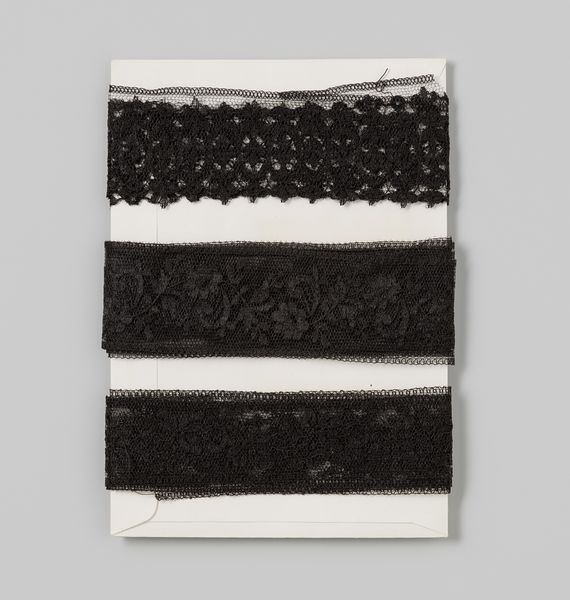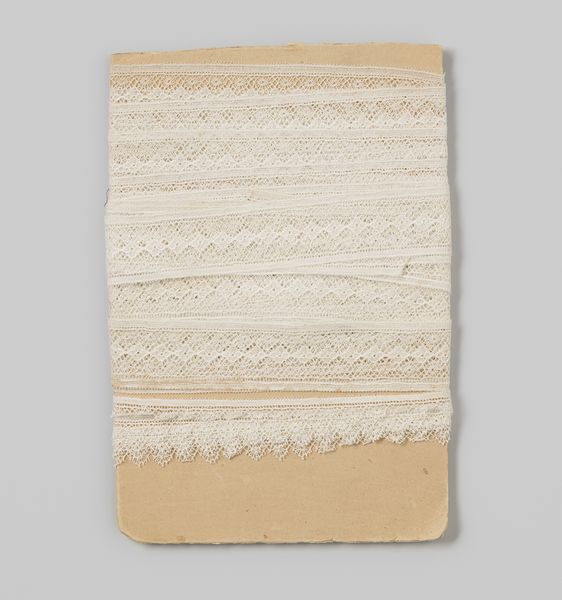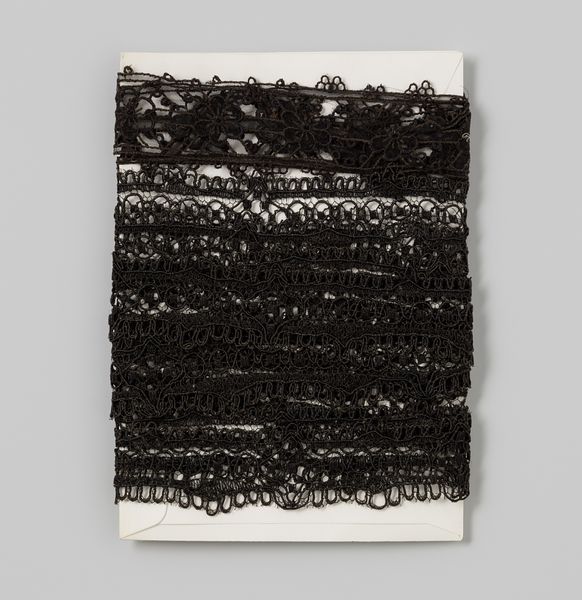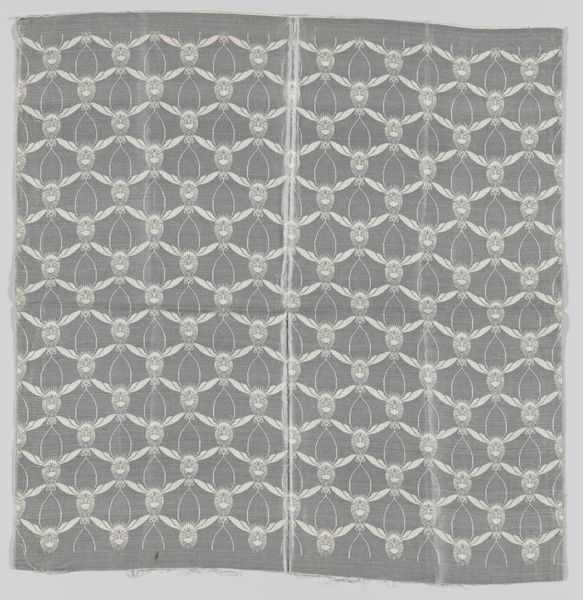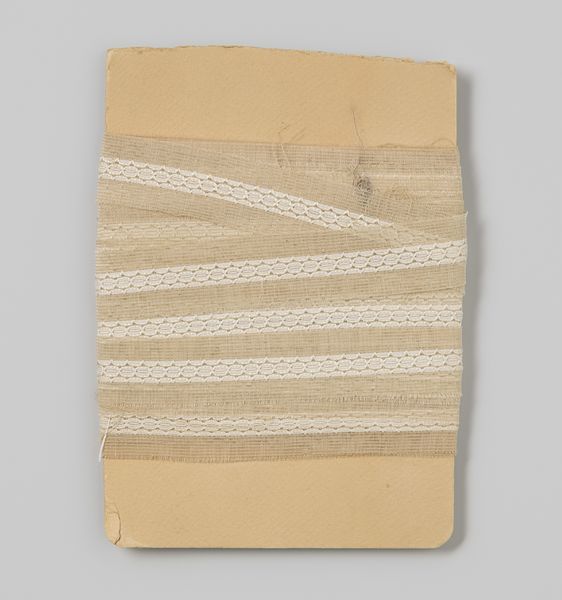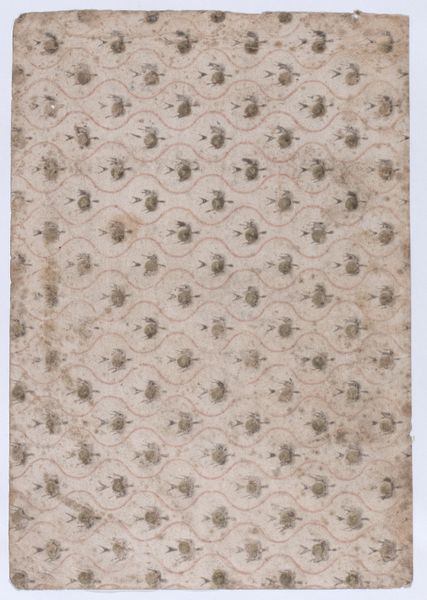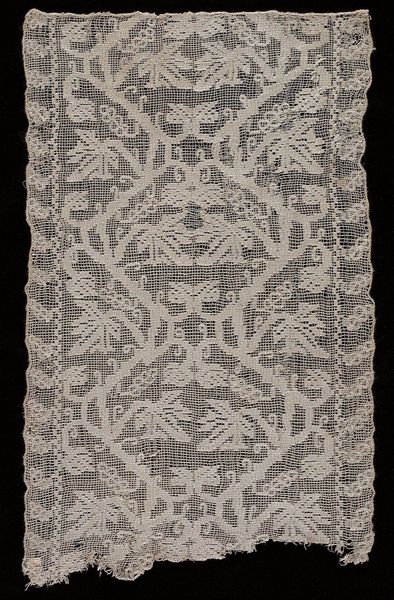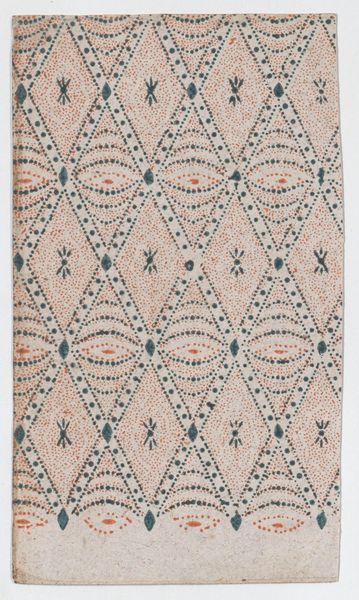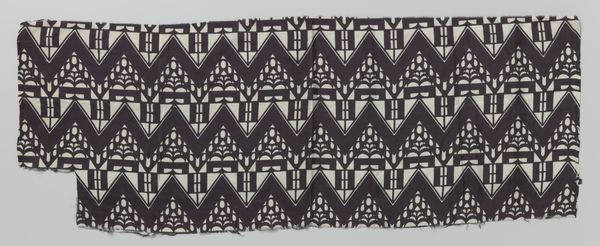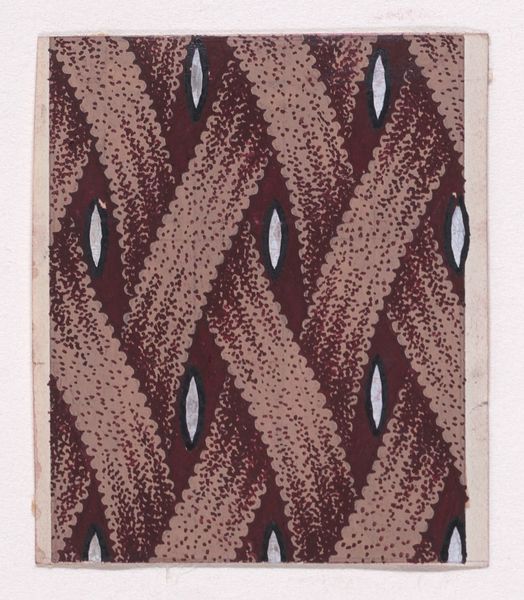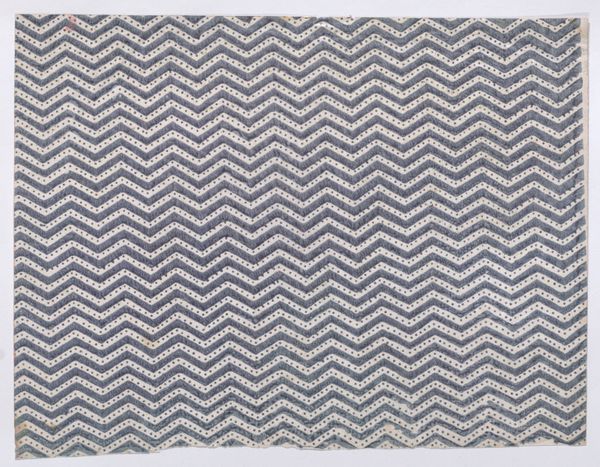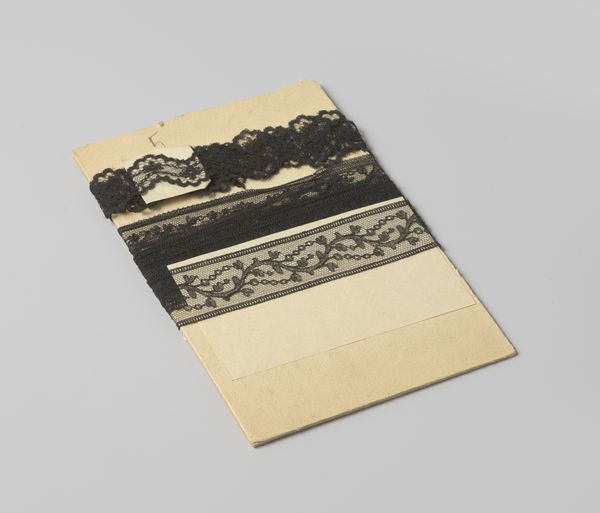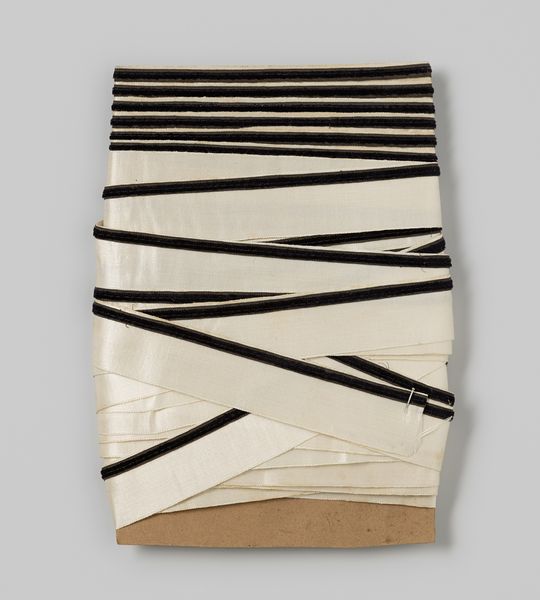
mixed-media, fibre-art, collage, textile
#
mixed-media
#
fibre-art
#
collage
#
textile
#
geometric
#
abstraction
#
decorative-art
Dimensions: width 19 cm, length 21 cm, width 14.5 cm
Copyright: Rijks Museum: Open Domain
Editor: Here we have "Strook van zwart kant met getande rand," or "Strip of black lace with serrated edge," from around 1920. It’s currently held at the Rijksmuseum. It’s… a strip of lace, obviously. What jumps out at me is the geometric pattern. What can you tell me about it? Curator: Well, it's a fragment, right? Displayed on a neutral ground. I find myself immediately considering the socio-economic implications of lacemaking at the time. Early 20th-century lace, while often associated with luxury and femininity, was frequently produced under exploitative labor conditions. The geometric abstraction, although beautiful, may have distanced the wearer from the realities of its production. Who made this? What were their circumstances? Editor: That’s a sobering perspective. I was focusing on the zigzags, which, I guess, give it a kind of “modern” feel. Curator: Exactly! The move towards abstraction in decorative arts coincided with major shifts in women's roles and expectations. So the geometry also allowed this lace to participate in these broader dialogues about industrialization and shifting societal norms. It isn’t “just” lace. What kind of women wore these styles, and why? Editor: It’s amazing how much social history is embedded in such a small piece of fabric. I’ll definitely be thinking about the maker, and not just the design, next time I look at lace. Curator: It’s about recognizing the silent voices interwoven into the artwork, challenging us to confront uncomfortable truths about production and consumption. This changes how we see and experience art.
Comments
No comments
Be the first to comment and join the conversation on the ultimate creative platform.
